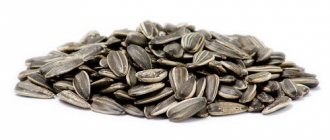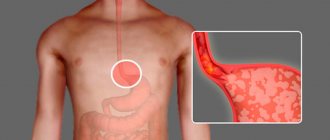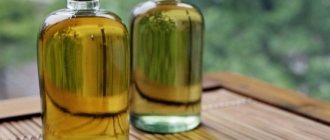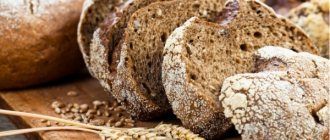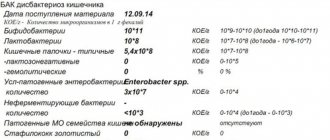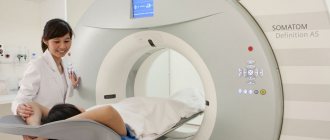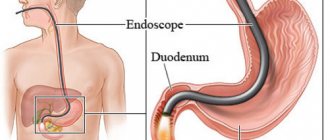Types of fasting
Fasting can be more or less strict and is carried out according to one of the following schemes:
- Complete hunger is a ban on eating any food; you are only allowed to drink water without additives.
- Absolute, “dry” fasting is the exclusion of not only food, but also water from the diet. Its duration should not exceed 3 days.
- Combined – consists of alternating regular and absolute fasting.
- Fractional – periodic implementation of several fasting and dietary courses in a row.
- Staged fasting is similar to fractional fasting, but in this case the periods of abstinence from food are shortened.
In medical practice, various options for complete fasting are most often used, including fractional and stepwise fasting.
Things to remember
- You cannot start fasting in the acute stage. Exacerbations of accompanying diseases should also be taken into account.
- Fasting is accompanied by drinking large amounts of fluid. You are allowed to drink non-carbonated mineral water. It is recommended to drink 2 liters of water daily.
- If pain occurs in the epigastric area, it is recommended to drink still water or alkaline mineral water to reduce the acidity of gastric juice. If the pain becomes intense, the course of therapeutic fasting should be stopped. The diet is restored gradually.
- In order not to increase the feeling of hunger, the patient is advised to stay in a warm room and avoid low temperatures.
- If you refuse food, it is recommended to get up and go to bed at a strictly defined time.
- Walking in the fresh air will help reduce hypoxia and migraines during fasting.
- Physical activity during periods of hunger is kept to a minimum.
How to fast with acute gastritis
Acute gastritis should be treated immediately.
You need to give up food immediately.
On the first day, unloading is arranged.
Complete fasting for acute gastritis lasts 1-2 days. You can drink water and hot milk with soda added, but it is better to avoid drinks. If the patient's condition improves, unsweetened black tea is allowed on the second day.
In the absence of complaints of abdominal pain, belching and bowel disorders, on the third day, a broth of lean meat with white wheat crackers and rice is consumed. The diet is expanded with non-coarse cereal porridges boiled in water. Drink still water: you can add a small amount of soda to the liquid.
Meals are small and frequent. The smaller the serving sizes, the better.
What not to do for acute gastritis
During the recovery period after fasting, the consumption of raw vegetables, fruits and freshly squeezed juices is not allowed: the products contain a lot of sugar.
Prolonged fasting (more than 3 days) is not recommended: it will worsen the pathology.
Instructions
If the patient has not practiced fasting before, then it should be done gradually. First you need to fast once a week, then you can fast for 3 days.
During the fasting process, it is necessary to carefully monitor your condition and evaluate it; with proper preparation, the feeling of hunger will not be so unbearably painful, and your health will be quite acceptable.
If the method of cleansing through fasting is not suitable for the patient, then in the process of refusing food he will experience physical suffering and emotional dissatisfaction, irritability and pain in the stomach.
Then it is necessary to stop fasting and undergo an examination; the patient probably has some pathologies that manifest themselves during the period of refusal to eat.
- Some experts argue that juice in the stomach is produced reflexively when food begins to enter it. In general, this is true, but only in people with an absolutely healthy digestive system.
- In some gastrointestinal pathologies, juice secretion occurs continuously, while acidity is increased, so fasting in such a situation can only do harm.
- Fasting therapy is possible only with normal or low acidity; only then can one count on the benefits of the procedure, which manifests itself in the unloading and cleansing of the gastrointestinal tract.
- Also, you should not fast for gastritis of the erosive type, because the secretion irritates the mucous membrane, only aggravating the patient’s condition.
But fasting for too long, even with gastritis with minimal acidity, is not recommended, otherwise the glands will atrophy and stop producing gastric secretions even when necessary.
In case of acute gastritis, treatment should be immediate, and food should also be abandoned immediately. On the first day you need to do a little fasting, and from the second day you should switch to fasting, which lasts 1-2 days.
You can drink water or milk with soda, but it is better to avoid drinks. If the patient’s condition noticeably improves, then on the second day of fasting you can drink black tea without sweeteners.
If there are no complaints such as belching and epigastric pain, or defecation disorders, then on the third day you can eat chicken broth with breast and crackers, rice.
Gradually, the diet is expanded by adding water-based cereals to it. You can drink still water, and meals should be frequent and small with minimal portion sizes.
It is also useful to fast during an exacerbation of the disease. The principles of nutrition in this case are the same as for acute gastritis.
- If you have stomach pain, you can drink water with soda added. Alkaline mineral water is especially useful, which successfully reduces gastric acidity and reduces secretion production.
- If you are worried about a strong feeling of hunger, then it is recommended to drink water and distract yourself with something. At the same time, water fills the stomach, creating a feeling of fullness, and a distracting activity will help the brain forget about hunger, which is often psychological rather than physiological in nature.
- In addition, it is recommended to protect yourself from hypothermia; it’s just that the feeling of cold against the background of fasting becomes more noticeable.
- Intraorganic activity will be normalized if the patient follows the regime, that is, goes to bed and gets up at the same time, and it is better to fall asleep no later than 22 hours.
- If headaches often occur, then you need to walk in the fresh air, avoid overload, etc.
If all recommendations are followed, fasting will have a high therapeutic effect, alleviate the condition and speed up recovery from gastritis.
Full course of treatment
The patient fasts for three days and then returns to normal eating for five days. The diet does not contain much fat, carbohydrates and coarse fiber. Food is consumed in 5-6 meals.
Fasting for chronic gastritis
In order to carry out proper therapeutic fasting for chronic gastritis with high acidity, it is recommended to obtain permission from the attending physician to carry out the procedure.
It is important to prepare mentally and physically for therapeutic fasting. Abrupt refusal to eat food is not easy to bear. It is better to approach the process gradually, reducing the amount of food in your diet. Gradual refusal will reduce the load on the stomach and prepare the body for the upcoming refusal of food. Preparation time should take at least a week.
End of the procedure
First, you need to introduce semi-liquid porridges and slimy soups into your diet. Then, after 1-2 days, boil or steam vegetables. After this, you can add fermented milk products and, lastly, meat and fish.
Nutrition during the treatment period must comply with the rules of the diet. You need to eat in small portions, several times during the day. Fatty, spicy, salty foods are excluded from the diet. The menu should be balanced and contain natural, healthy food. You should follow these rules after treatment if you want to cure gastritis forever.
Before starting therapeutic fasting, consult your doctor. If he believes that this procedure is possible, do it taking into account all the recommendations.
Who shouldn't go hungry?
In case of hemorrhagic gastritis, the procedure is considered dangerous, since the mucous membranes are even more injured by digestive juice and can cause ulcerative lesions. It is observed that with increased acidity of gastric juice, the procedure can also become dangerous.
It is allowed to use fasting only when the acidity of the stomach is low. In this case, the body is cleansed and unloaded, gastric juice is produced in small quantities and does not irritate the mucous membrane so much.
The fasting process should not be prolonged, as in this case the production of glands may cease.
Fasting is absolutely contraindicated for:
- weight deficiency;
- endocrine diseases of the adrenal glands, thyroid gland, pituitary gland;
- rheumatism;
- malignant neoplasms;
- active tuberculosis;
- nonspecific ulcerative colitis, Crohn's disease;
- active hepatitis;
- severe renal or heart failure;
- purulent processes in the abdominal cavity;
- increased blood clotting;
- arrhythmias;
- previous heart attack or stroke;
- pregnancy and lactation;
- aged less than 10 and more than 75 years;
- epilepsy.
In addition, starvation treatment is not carried out if the diagnosis is in doubt. In each case, the decision on the possibility of fasting is made individually, taking into account the entire range of indications and contraindications.
Therapeutic fasting for various forms of gastritis
In case of acute inflammation of the stomach and in the active stage of the chronic process, complete fasting is necessary. It is usually prescribed for 1-3 days, depending on the severity of symptoms and the speed of their regression.
During this period, you are only allowed to drink still water and drug treatment is carried out at the same time. After the condition has stabilized, vegetable purees, mucous soups, and jelly are introduced into the diet. The diet is expanding gradually.
In case of chronic hyperacid and erosive gastritis, long-term fasting is contraindicated. This is due to the corrosive effect of hydrochloric acid on the mucous membrane. If, with gastritis with high acidity, food does not enter the stomach, then it begins to digest its own walls.
Normally, against the background of hunger, gastric secretion decreases. However, in the presence of gastritis, basal secretion is also increased, occurring without an irritant. This means that acidity levels will still not return to normal without appropriate drug treatment.
Therapeutic fasting is practiced for chronic atrophic, hypo- and anacid gastritis. In this case, it normalizes the motility of the digestive tract, allows you to slightly increase the pH level and relieve inflammation from the gastric mucosa due to its functional rest. Usually complete fasting is prescribed, the duration of which is very variable and depends on the general condition of the patient.
Absolute fasting for gastritis is not practiced, since the inflammatory process may intensify against the background of insufficient fluid intake.
If a Helicobacter pylori infection is detected in a patient, eradication therapy is first carried out.
Constant hunger gastritis (hunger pains)
Is it possible to eat persimmons with gastritis?
A normally functioning body sends impulses about the need to eat approximately 3–4 hours after eating; minor deviations may vary depending on the individual characteristics of the person. The stomach, as the main organ of the digestive tract, is responsible for sending impulses to the cerebral cortex.
However, the occurrence of a repeated desire to eat with painful symptoms immediately after eating or several hours later signals certain problems in the body, which may have different causes and, accordingly, consequences. This manifestation of the body is called “hunger pain” in medicine.
However, over time, the discomfort signals of the stomach are characterized by more intense pain; the patient increasingly feels strong spasms in the epigastric region, sometimes radiating to the hypochondrium. The feeling of hunger after eating with gastritis can manifest itself as painful sensations of varying strength and tendency: persistent nagging symptoms, sudden manifestations or antispasmodic, continuous sharp pain.
Most often, hunger pains signal a person that he has a disease such as gastritis.
It is worth noting that the feeling of hunger with gastritis can appear at any time of the day, even when the patient has eaten heavily. Most often, if you want to eat a very short time after eating, and such a desire is accompanied by painful and painful symptoms, then this may signal the presence of a developing or advanced stomach ulcer.
Manifestations of hunger approximately three hours after eating indicate the presence of problems with the duodenum. In addition, a constant desire to eat can often be the cause of premenstrual syndrome in women, an indicator of physical or moral exhaustion of the body.
Increased acidity of gastric secretions can be a reason that provokes a constant feeling of hunger during gastritis (hyperacid gastritis). Such patients are well aware of the sensation of sucking pain “in the pit of the stomach”, which can be drowned out even by “freezing a worm” (at least by eating a little). This situation may also indicate other diseases of the gastrointestinal tract - ulcerative manifestations on the mucous membrane of the duodenum and stomach.
Therefore, before starting treatment for gastritis, it is worth clarifying the diagnosis. In order to somehow stop the desire to constantly eat something, it is necessary to introduce a gentle diet, which is prescribed and monitored by the attending physician. In this case, the daily intake of nutrients is spread over five to six meals. Fried, spicy, smoked and salty foods, as well as tea and coffee, are excluded from the diet.
What symptoms may occur during fasting?
The following symptoms may occur during fasting:
- Strong feeling of hunger. As a rule, it is observed in the first two to three days, then it becomes dull and disappears completely. Hunger may appear again after 5 days, but it will be much easier to cope with.
- Stomach pain. They are usually weak and occur in the first days. Then gastric juice practically stops being produced, the mucous walls are not irritated, and the pain goes away. But if the pain is severe and sharp and does not go away for a long time, then you should stop fasting and consult a doctor.
- Fasting treatment may be accompanied by a decrease in activity and performance. Often there is a feeling of weakness or extreme fatigue, loss of strength, and apathy. After about three days, these symptoms will pass, and the fasting person will feel lightness throughout the body and even a surge of strength.
- Unpleasant sensations in the mouth: unpleasant odor, feeling of dryness, sour taste, coating on the tongue. All these symptoms will go away after the fasting period ends.
- Nausea. It occurs in the mornings in the first few days.
- A feeling of disgust for food appears around the fifth or sixth day of fasting. It goes away after returning to a normal diet.
- Headache. To ease them, you can rest a little, sleep or walk in the fresh air.
- Increased or, conversely, slowing of the heartbeat. Typically, such manifestations are temporary and disappear after the body gets used to the new regime.
Reviews
Anatoly, 69 years old
I have been practicing three-day fasting for 20 years. I feel great, my health problems are minor. I’m used to the system, I can easily get in and out of it. I tried to fast longer - the process was too exhausting for me. I believe that in a couple of days without food, the body can be completely renewed and cleansed. The Poles say, “Too much is not healthy!”
Svetlana, 28 years old
After a bunch of diets that brought temporary results, I decided to fast. At first I didn’t eat for 12 hours, then I refused food for a day, then for two or three. In breaks from days on the water itself, I ate vegetables, fruits, adding some grains and meat. Now I fast in courses of 5-6 days, and eat normally for the same amount of time. In six months I lost 18 kg.
Galina, 41 years old
Girls! I ask you, do not start fasting abruptly and without thought. First, carefully study all recommendations. One day I simply stopped eating, thinking that I would lose weight. I endured all the unpleasant manifestations of fasting, and after 8 days I ended up in intensive care. I just didn’t know that such a thing requires a systematic and competent approach.
Gastritis is an inflammatory process that occurs in the gastric mucosa. It occurs due to the consumption of low-quality products, frequent stress and weakening of the body's protective properties.
This is a disease that affects every second inhabitant of the planet. People of all ages are susceptible to it. This can happen both in childhood and in adulthood.
Most people do not follow a diet for gastritis and do not take any medications during remission. But there is a danger that this disease can develop into a stomach ulcer or even oncology.
It is necessary to decide which foods for gastritis and they can be eaten in unlimited quantities. This will help reduce the risk of the disease getting worse.
Due to the fact that people rarely pay attention to gastritis of the stomach and take the necessary measures, this disease very quickly develops into a chronic stage.
Preparatory stage
Fasting cannot be started suddenly and on one day, as this can have a negative impact on the body. It is necessary to gradually come to this and remove the load from the digestive system, limiting and reducing portions of food and the amount of food taken.
Refusal to eat is a stressful situation. A person should try to limit himself to food intake for one day and gradually increase this period to 7 days. A week is a significant period for the gastrointestinal tract to return to normal and establish the correct production of enzymes.
The first days of fasting
After confirming the diagnosis, the doctor prescribes treatment in full and describes all the nuances. It is necessary to start immediately to avoid complications. You need to prepare for fasting in advance. On the first day it is not recommended to consume any foods; the only thing allowed is clean water and milk with soda. A solution of warm milk and soda helps reduce the acidity of digestive enzymes and relieve pain in the first days. Thus, the body is initially cleansed and freed from foreign substances.
On the second day, if no unpleasant symptoms or pain are detected, you can allow yourself to drink tea without sugar.
From the third day, familiar foods are gradually introduced into the diet. It should be light and not immediately burden the digestive system, but do it gradually, following some rules:
- It is better to cook by steaming with minimal use of oil.
- Limit your consumption of flour products and sweets.
- Make it a rule to drink a glass of water before every meal.
- If possible, drink a glass of kefir in the morning and evening.
- The diet must include soups and liquid foods.
- Avoid citrus fruits (lemons, oranges, tangerines). With gastritis, juice can injure the walls of the stomach and cause ulcers.
- This is one of the tricks on how to spend the first 3-4 days without food and how to start eating after restrictions.
Preparing the body for fasting
Refusal to eat food is a gradual process that requires a preparatory stage. You should not suddenly stop eating. Preparation involves slowly giving up familiar foods:
- during the first day of the fasting diet, you should exclude meat and fish ingredients, instead eat vegetables and fruits, fermented milk products;
- on the second day you need to give up sweets, flour, and bakery products;
- consumption of products of plant origin baked, stewed, boiled, steamed;
- during the fourth day, replace your usual meals (2-3 times) with a glass of fermented milk product, for example, kefir, fermented baked milk;
- on the fifth day you need to eat baked, stewed, boiled vegetables;
- sixth day – intake of dairy products, for example, cottage cheese, kefir;
- seventh day - the diet is limited to glasses of fresh kefir.
After a week of the preparatory stage, you can begin therapeutic fasting.
Use of herbal preparations
Herbal remedies are used in the treatment of many diseases. They have bactericidal and wound-healing effects. Herbs can be used as an independent treatment during fasting, used in combination with water, or introduced into the daily diet and drunk before each meal. This way the stomach will be less injured and strained, and the mucous membrane will be restored. The fees also relieve pain, relieve and release organs.
Some of the main herbs are sage, chamomile, calendula and coltsfoot. They can be brewed either individually or combined. Pour 1-2 teaspoons of each herb into 500 ml of boiling water and let it brew for an hour. Before taking, you can warm up or drink the infusion at room temperature.
Diet for gastritis with erosions on the walls of the stomach
The appearance of erosions on the walls of the stomach is an advanced stage of development in gastritis. Erosions are dead areas of the stomach.
Gradually it can develop into atrophic gastritis.
The walls of the stomach become thinner, and the amount of enzymes secreted by the internal organs decreases.
The diet for these two diseases is absolutely identical. It is necessary to combine medications and be sure to eat properly for gastritis:
- Hot strong coffee. Sour vegetables and fruits.
- Alcoholic drinks.
- Carbonated drinks.
- Dark chocolate and ice cream.
- Seasonings and spices.
- Large amounts of preservatives.
- Dietary dishes.
- Eggs in any form, but not fried. Fresh fruit jelly.
Breaking out of fasting
After this process is completed and the body is rebuilt in the right direction, you should adhere to certain points. In order not to upset or disrupt the results obtained after leaving the “diet”, you need to give up any drinks that contain a high sugar content (juices, soda).
Portions during food consumption should be small, with the so-called “fist” - it is better not to finish eating than to overeat and re-load the body.
Consumption of foods that the patient ate before is possible. They need to be gradually introduced into the diet, but reduce fatty, spicy, salty and fried foods.
It is recommended to make a plan for the day and calculate when meals will occur. You need to eat every 3-4 hours, but in small portions. If this gap increases, the body requires a snack, and this is not always good. This is followed again by a malnutrition, which indicates the production of increased acidity of digestive enzymes. It turns out to be a vicious circle.
Useful video
Today, one of the most popular diseases of the gastrointestinal tract is gastritis. This is a disease in which the gastric mucosa suffers and ulcers appear. Most often, this disease is caused by improper human nutrition. A diet consisting of junk food only contributes to favorable conditions for the development of gastritis. The disease can be recognized by the following symptoms: acute pain in the upper part of the stomach, dizziness, weakness, nausea, and often vomiting.
According to statistics, the disease is usually noticed at the last stage. Its treatment is approached carefully, starting with fasting. During the first days, the patient must completely refuse any food intake - experience a feeling of hunger in order to unload and cleanse the stomach.
Side effects
During fasting, the body's activity decreases and a person may feel unwell. In most cases, the symptoms that appear during this process are a normal reaction and go away on their own after 2-3 days. The patient may experience the following symptoms:
- severe hunger, which usually goes away after a day or two. Then this feeling wears off and doesn’t bother you much;
- pain in the abdomen. In the first days they are weak, then completely disappear;
- general weakness, fatigue, decreased activity. These symptoms disappear after 2–3 days, after which the person may feel a surge of energy;
- nausea, unpleasant taste in the mouth;
- headaches, dizziness. It is recommended to spend time in the fresh air and take a walk.
Sources: gastrit.guru/pitanie/golodanie-pri-gastrite.html https://medicalok.ru/zheludok/gastrit/golodanie-pri-gastrite.html https://gastrotract.ru/bolezn/gastrit/mozhno-li- golodat-pri-gastrite.html gastrolekar.ru/gastrit/lechebnoe-golodanie.html zhkt.ru/zheludok/gastrit/eda/golod.html https://medbrat.online/zheludok/gastrit/golodanie.html This material is worn exclusively subjective in nature and is not a guide to action. Only a qualified specialist can determine an accurate diagnosis and prescribe treatment.
Last modified: 03/19/2020
